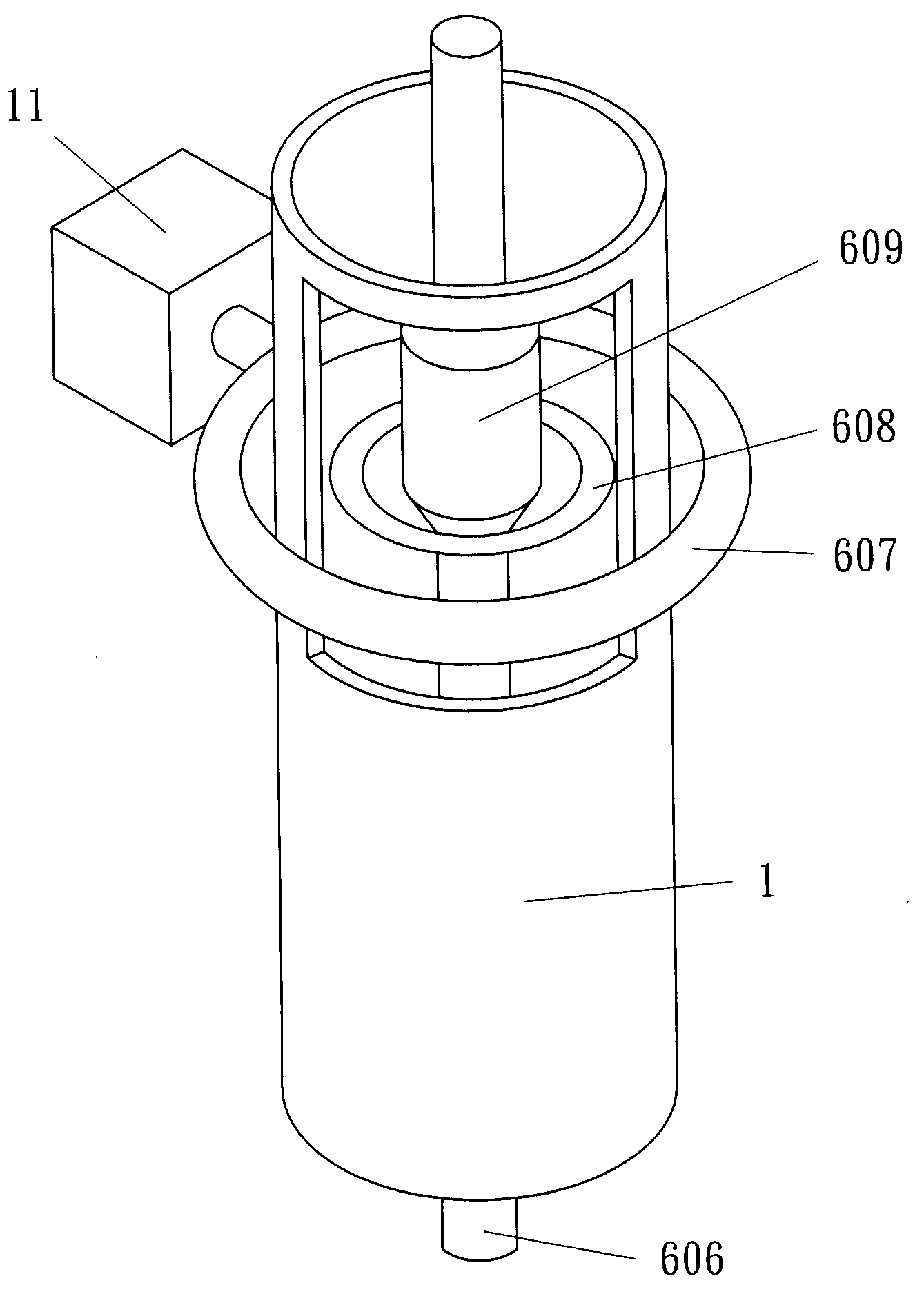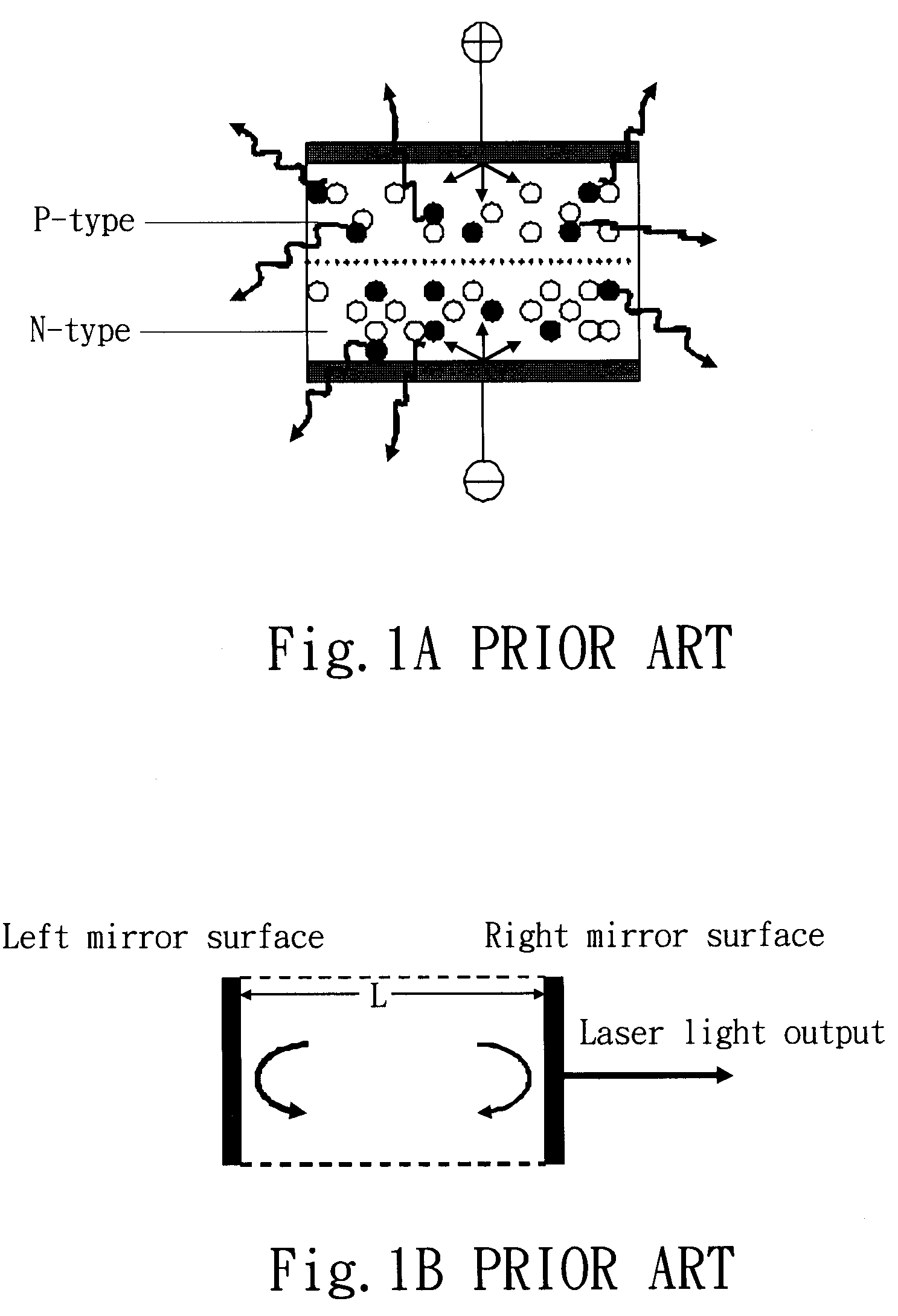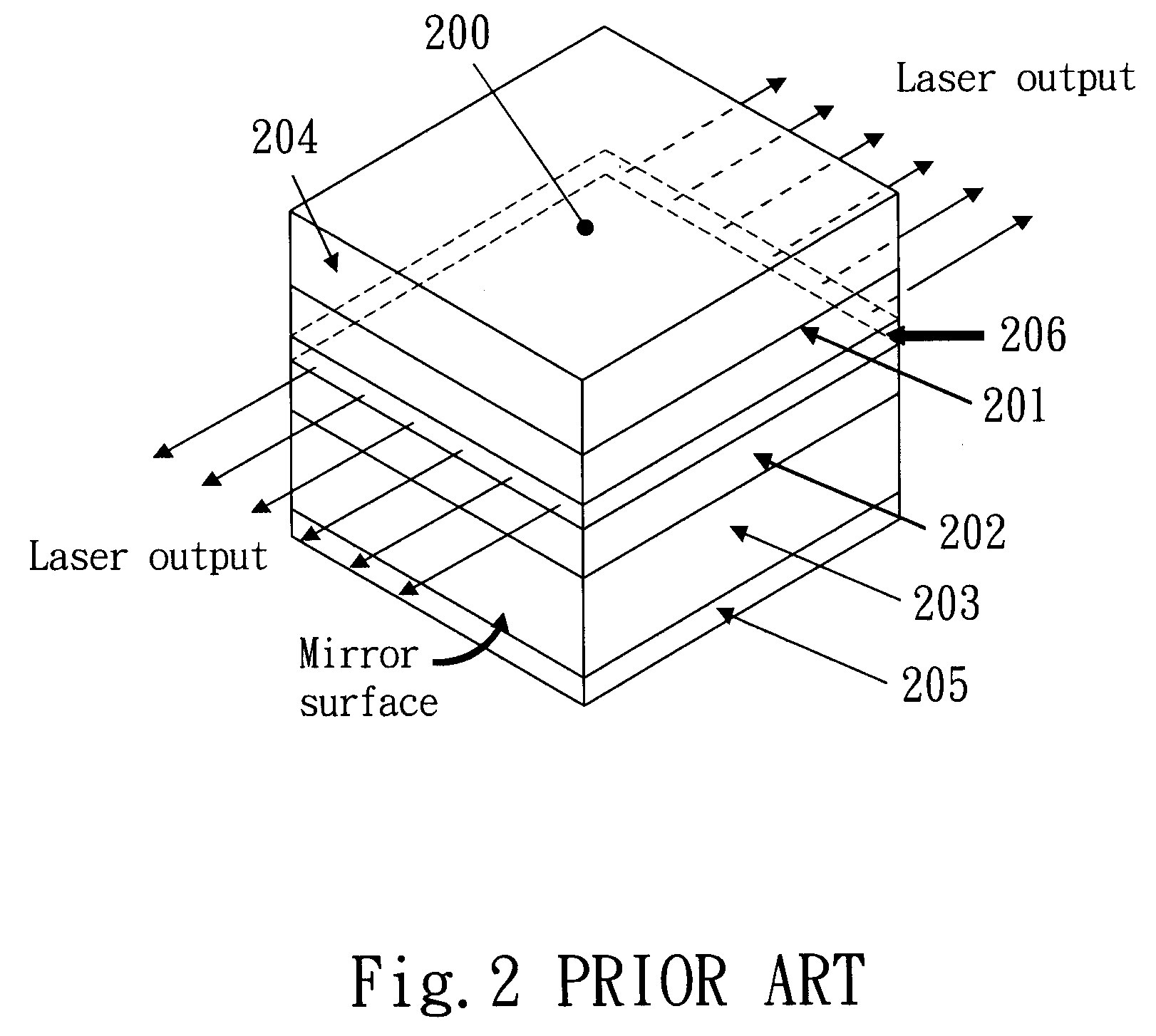Lighting Device Equipped with Coaxial Line Laser Diodes and Fabrication Method Thereof
a laser diode and coaxial line technology, applied in the direction of semiconductor lasers, instruments, fibre light guides, etc., can solve the problems of unsuitable long-term illumination, low extraction efficiency and heat generation of laser diodes, and large energy consumption of laser diodes, so as to reduce cost, increase illumination efficiency, and cost
- Summary
- Abstract
- Description
- Claims
- Application Information
AI Technical Summary
Benefits of technology
Problems solved by technology
Method used
Image
Examples
embodiment 1
Fabrication Method for Coaxial Line Laser Diodes
[0057]Refer to FIG. 7B for a VLSED method which stands for vertical large-number synchronizing and line-shape expitaxial deposition. Adopted such a method one set of machine can simultaneously perform deposition to produce ten pieces of coaxial line dual-heterogeneous laser ingots at a length of one meter each; then each laser ingot is cut in sections to form individual coaxial line laser diodes shown in FIG. 8B. At the initial stage of the fabrication process, referring to FIG. 7A and FIG. 7B, ten pieces of subrods 606 at a length of one meter and a diameter of 2 mm are provided and disposed into ten quartz ducts. The subrod 606 is formed through a VGF (Vertical Gradient Freeze) growth method as shown in FIG. 12A that includes the following steps:
[0058]1. dispose an a axial metal conductor rod 1201 engraved with Bragg's grating and embedded with an InP crystal seed 1202, and mount the rod at the bottom of a crucible 1203;
[0059]2. pour...
embodiment 2
The Coaxial Line Laser Diode and the Coaxial Lighting Optical Fiber can be Coupled to Form a Solid State to Provide White-Emitting Luminescence.
[0066]The embodiment 1 set forth above can also be employed to produce respectively three coaxial line laser diodes for red, green and blue colors. Then they can be coupled with three coaxial lighting optical fibers to blend light and form a solid state while-emitting luminescence device. FIG. 11 shows the top view of three color lighting optical fibers coupled in one bundle to blend and generate white-emitting light, with 1101 for the red lighting fiber, 1102 for the green light fiber, 1103 for the blue light fiber, and 1104 for blending of the three colors to provide white-emitting luminescence. Another alternative is providing a blue light coaxial line laser and a yellow light coaxial line laser to respectively inject light in two coaxial lighting optical fibers arranged in a twin-and-twisted manner that complement with each other to form...
embodiment 3
Coaxial Line Laser Diode and Coaxial Lighting Optical Fiber Incorporating with a Fluorescent Set to Form a White-Emitting Luminescence Device
[0067]Form a sub-assembly by coupling a coaxial line laser diode with a coaxial lighting optical fiber to receive light ejection from the laser diode, and install the sub-assembly in a fluorescent tube, a white-emitting luminescence device can be made as shown in FIG. 13, which includes a blue lighting fiber 1301, a second standby lighting fiber 1302 (for the purpose of forming an adjustable structure by providing an extra lighting color), an inner side coated with yellow phosphor 1303 and power supply sockets 1304 to connect the coaxial line laser diode to an external power source. The lighting optical fibers coupled with the coaxial line laser diodes encased in the tube coated with the phosphor to produce white-emitting luminescence is substantially like the conventional tubular fluorescent lamp coated with phosphor to generate white light. H...
PUM
 Login to View More
Login to View More Abstract
Description
Claims
Application Information
 Login to View More
Login to View More - R&D
- Intellectual Property
- Life Sciences
- Materials
- Tech Scout
- Unparalleled Data Quality
- Higher Quality Content
- 60% Fewer Hallucinations
Browse by: Latest US Patents, China's latest patents, Technical Efficacy Thesaurus, Application Domain, Technology Topic, Popular Technical Reports.
© 2025 PatSnap. All rights reserved.Legal|Privacy policy|Modern Slavery Act Transparency Statement|Sitemap|About US| Contact US: help@patsnap.com



